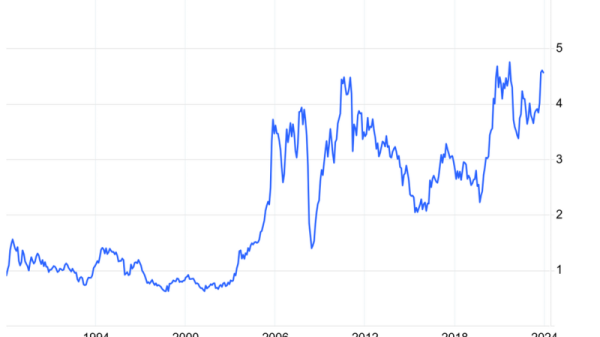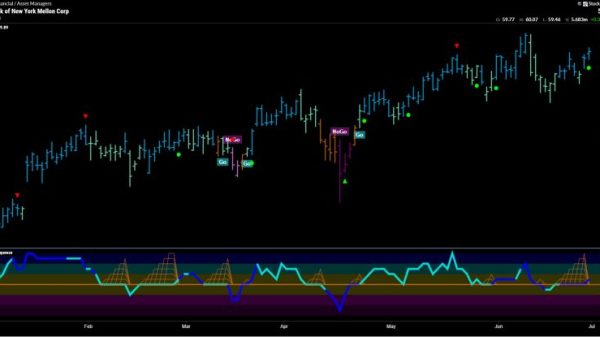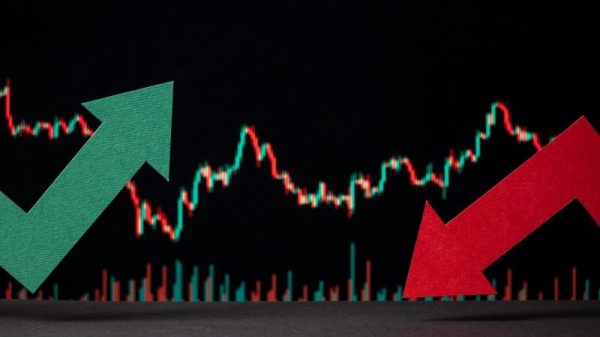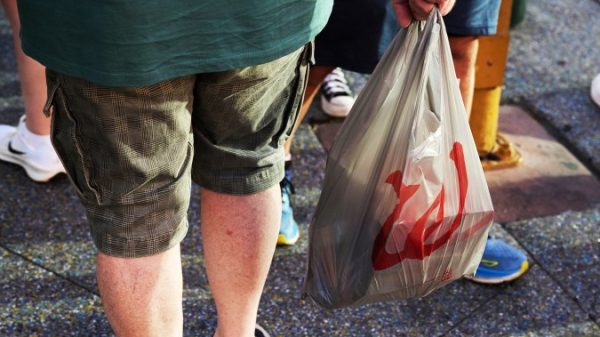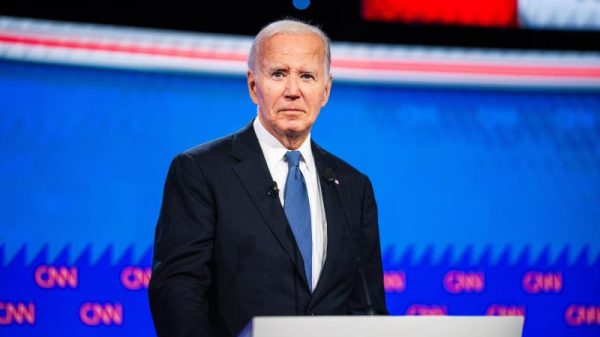For a long time, most of the world’s lithium was produced by an oligopoly of producers often referred to as the Big Three: Albemarle (NYSE:ALB), Sociedad Quimica y Minera de Chile (SQM) (NYSE:SQM) and Arcadium Lithium (NYSE:ALTM), formerly called Livent.
These US-listed companies remain major entities in the lithium sector; however, the space has expanded significantly in recent years, and interested investors should cast a wider net to look at global companies — in particular those listed in Australia and China, as companies in both countries have become major players in the industry.
While Australia has long been a top-producing country when it comes to lithium, China has risen quickly to become not only the top lithium processor and refiner, but also a major miner of the commodity. In fact, China was the third largest lithium-producing country in 2023 in terms of mine production, behind Australia and Chile.
Chinese companies are mining in other countries as well, including top producer Australia, where a few are part of major lithium joint ventures. For example, Australia’s largest lithium mine, Greenbushes, is owned and operated by Talison Lithium, which is 51 percent controlled by Tianqi Lithium Energy Australia, a joint venture between China’s Tianqi Lithium (SZSE:002466,HKEX:9696) and Australia’s IGO (ASX:IGO,OTC Pink:IPDGF). The remaining 49 percent stake in Talison is owned by Albemarle. Joint ventures can offer investors different ways to get exposure to mines and jurisdictions.
Mergers and acquisitions are common in the lithium space, with the biggest news in the industry recently being Allkem and Livent’s announcement of a US$10.6 billion merger of equals in May 2023. The resultant company, Arcadium Lithium, now has a production capacity of 248,000 metric tons (MT) of lithium carbonate equivalent per year.
As for Chile, the country’s lithium landscape is changing following the announcement of its National Lithium Strategy in mid-2023, which will result in future lithium projects having public-private partnerships. Codelco, the country’s state-owned mining company, is working with Albemarle and SQM to renegotiate their contracts with conditions including payments to the state and keeping research and development activities inside the country.
All in all, lithium investors have a lot to keep an eye on as the space continues to shift. Read on for an overview of the current top lithium-producing firms by market cap. Data was current as of June 25, 2024.
1. SQM (NYSE:SQM)
Market cap: US$11.43 billion; share price: US$40.23
SQM has five business areas, ranging from lithium to potassium to specialty plant nutrition. Its primary lithium operations are in Chile, where it is a longtime producer, and it is working to bring production online in Australia as well.
In Chile, SQM sources brine from the Salar de Atacama; it then processes lithium chloride from the brine into lithium carbonate and hydroxide at its Salar del Carmen lithium plants near Antofagasta. SQM is expanding production at the Salar del Carmen from 180,000 MT to 210,000 MT starting this year. To help lessen its environmental impact, the company has announced it will invest US$1.5 billion into the Salar Futuro project, a technology upgrade that includes advanced evaporation technologies, direct lithium extraction and a seawater and desalination plant.
Chile’s aforementioned National Lithium Strategy has created some uncertainty for SQM, but the government has stated it will respect its current contracts, which run through 2030. In early 2024, the Chilean government said that state-owned mining company Codelco and SQM have formed a ‘common partnership’ in which Codelco will hold a 50 percent stake plus one share to give it majority control.
Outside of South America, SQM is developing the Mount Holland lithium project in Australia; the project is known as one of the world’s largest hard-rock deposits. Mount Holland is a joint venture with Wesfarmers (ASX:WES,OTC Pink:WFAFF), which took over Australian lithium-mining company Kidman Resources in 2019. The company stated in its 2022 annual report that it expects lithium hydroxide production to commence by H1 2025.
SQM said in November 2023 that its lithium carbonate capacity was set to reach 210,000 MT by the beginning of 2024.
In mid-June, SQM penned a long-term supply deal with Hyundai (KRX:005380) and Kia (KRX:000270) to provide lithium hydroxide for electric vehicle batteries. SQM, which already has supply agreements with Ford Motors (NYSE:F) and LG Energy (KRX:373220), said it will provide Hyundai and Kia with a portion of their future lithium hydroxide supply.
2. Albemarle (NYSE:ALB)
Market cap: US$10.9 billion; share price: US$92.77
North Carolina-based Albemarle underwent a realignment in 2022, dividing the lithium company into two primary business units, one of which — the Albemarle Energy Storage unit — is focused wholly on the lithium-ion battery and energy transition markets. It includes the firm’s lithium carbonate, hydroxide and metal production.
Albemarle has a broad portfolio of lithium mines and facilities, with extraction in Chile, Australia and the US. Looking first at Chile, Albemarle produces lithium carbonate at its La Negra lithium conversion plants, which process brine from the Salar de Atacama, the country’s largest salt flat. La Negra has been in operation since 1984 and now consists of three plants, with the latest, La Negra III/IV, coming online in 2022. The newest plant includes a thermal evaporator that reduces water consumption by up to 30 percent. Going forward, Albemarle is hoping to implement direct lithium extraction technology at the salt flat by 2028 or 2029, a move that would help further reduce water usage.
Albemarle’s Australian assets are both joint ventures. The company and Mineral Resources (ASX:MIN,OTC Pink:MALRF) own the MARBL joint venture, which owns and operates the Wodgina hard-rock lithium mine and on-site Kemerton lithium hydroxide facility in Western Australia. Albemarle previously held 60 percent interests in both Wodgina and Kemerton; now, following multiple changes to their joint venture agreement this year, the two companies each have 50 percent interests in Wodgina, and Albemarle has 100 percent ownership of Kemerton. The company’s other Australian joint venture is the aforementioned Greenbushes mine, in which it holds a 49 percent interest alongside Tianqi and IGO.
As for the US, Albemarle is working to expand its role in domestic production and processing in line with the government’s Inflation Reduction Act. The company owns the Silver Peak lithium brine operations in Nevada’s Clayton Valley, which is currently the country’s only source of lithium production; it plans to double the site’s lithium production by 2025.
In September 2023, Albemarle received a US$90 million critical materials award from the US Department of Defense to boost its domestic lithium production and support the country’s burgeoning EV battery supply chain.
In its home state of North Carolina, Albemarle is planning to bring its past-producing Kings Mountain lithium mine back online, subject to permitting approval and a final investment decision. In late 2022, Albemarle received US$150 million in funding from the US government to support the building of a commercial-scale lithium concentrator facility on site. This lithium would then supply the company’s planned lithium hydroxide Mega-Flex facility, which will be nearby in Chester County, South Carolina. It is also developing the upcoming Albemarle Technology Park in North Carolina, which will serve as an advanced R&D facility for the acceleration of lithium innovation.
In early June, Albemarle unveiled its project plan for the proposed mine to the community. The mine is expected to produce around 420,000 MT of lithium-bearing spodumene concentrate annually.
3. Mineral Resources (ASX:MIN,OTC Pink:MALRF)
Market cap: US$7.09 billion; share price: AU$55.92
Australia-based Mineral Resources (MinRes) is a commodities company mining lithium and iron ore in the country. As mentioned, both of MinRes’ lithium mines are joint ventures with other companies on this list.
MinRes owns 50 percent of the Mount Marion lithium operation, which is a joint venture with Ganfeng Lithium. The joint venture was originally between MinRes and NeoMetals (ASX:NMT,OTC Pink:RRSSF) when it commenced in 2009, but the agreement changed over the years, eventually becoming the 50/50 agreement with Ganfeng that it is today. Production of lithium concentrate began at Mount Marion in 2017 and all mining is managed by MinRes, which also has a 51 percent share of the output from the spodumene concentrator at the site.
In June 2023, MinRes and Ganfeng mutually terminated their agreement to convert spodumene concentrate from Mount Marion into lithium battery chemicals, although MinRes will continue to sell its spodumene to Ganfeng. The company completed the expansion of Mount Marion’s processing plant last year, and recently reported increased lithium production as it ramped up activities in the first half of its FY 2024.
The company’s also has the Wodgina mine in Western Australia, which is operated under the MARBL joint venture with Albemarle. Put on care and maintenance in 2019, Wodgina was restarted by the joint venture and entered production in May 2022. The Kemerton lithium hydroxide plant reached mechanical completion in late 2022.
As explained, the two companies restructured the MARBL joint venture in February 2023. Under the new terms, MinRes owns 50 percent of Wodgina, up from 40 percent. The restructure originally saw Albemarle up its interest in the Kemerton plants from 60 percent to 85 percent, but in July 2023 it was amended to 100 percent in exchange for a payment of around US$400 million. In addition, MinRes acquired a 50 percent stake in the Qinzhou and Meishan plants from Albemarle.
Wodgina reached a record 10,700 MT of lithium battery chemicals sold in the first half of MinRes’ financial year 2024.
In late 2023, Mineral Resources acquired the Bald Hill lithium mine, which is also located in Western Australia. According to the company’s Q3 2024 results released in April, the mine’s first full quarter of production yielded 30,000 dry metric tons (dmt) of spodumene concentrate.
4. Tianqi Lithium (SZSE:002466,HKEX:9696)
Market cap: US$6.61 billion; share price: 29.53 Chinese yuan
Tianqi Lithium, a subsidiary of Chengdu Tianqi Industry Group, is the world’s largest hard-rock lithium producer. The company has assets in Australia, Chile and China. It holds a significant stake in SQM — Tianqi paid US$209.6 million for a 2.1 percent stake in SQM in September 2016, which it then boosted to 23.77 percent for US$4.07 billion in 2018.
In Australia, Tianqi has the Greenbushes mine, which it acquired in 2012 when it purchased Talison Lithium, beating out Rockwood Holdings. However, it subsequently sold a 49 percent interest in Talison to Rockwood, which, as mentioned, is now owned by Albemarle. The company also developed a lithium hydroxide plant in the Kwinana Industrial Area south of Perth in Western Australia. The facility launched production in Q3 2019, and first output took place in mid-2021.
Ownership of Greenbushes became further divided in 2020, when Tianqi sold a stake in its Australian assets to IGO in a US$1.4 billion deal, giving a boost to the then financially troubled Chinese company. The deal gave IGO a 25 percent interest in Greenbushes and a 49 percent interest in Kwinana.
Rising lithium prices later helped further buoy Tianqi, which listed in Hong Kong in 2022, raising about US$1.7 billion in its debut. Commercial production at Kwinana began in December 2022 from Train 1 of the facility, and Train 2 is expected to be commissioned in 2024. The hydroxide plant is being fed by lithium from Greenbushes, and should have a production capacity of 48,000 MT per year once both trains are online.
In February this year, Tianqi Lithium updated its total mineral reserves at Greenbushes to 447 million MT with the average grade of lithium oxide at 1.5 percent, or approximately 16 million MT of lithium carbonate equivalent.
5. Ganfeng Lithium (OTC Pink:GNENF,SZSE:002460,HKEX:1772)
Market cap: US$6.47 billion; share price: 28.07 Chinese yuan
Founded in 2000 and listed in 2010, Ganfeng Lithium has operations across the entire electric vehicle battery supply chain. Even though it is relatively new compared to some on the list, the company has become one of the world’s largest producers of both lithium metals and lithium hydroxide. This is due to its strategy of investing heavily in overseas projects to secure long-term lithium resources, with its first coming in 2014. Ganfeng now has interests in lithium resources around the world, from Australia to Argentina, China and Ireland; its operations include a 50/50 joint venture with Mineral Resources (ASX:MIN,OTC Pink:MALRF) for the Mount Marion mine in Western Australia.
In the last half decade alone, Ganfeng has made multiple significant deals. As mentioned, in 2018, the company bought SQM’s stake in Lithium Americas’ Caucharí-Olaroz lithium brine project in Argentina, and two years later it upped its interest in Caucharí-Olaroz to 51 percent, taking a controlling stake in the asset.
In 2021, Ganfeng continued to expand. The company agreed to buy the shares it did not already own in Mexico-focused Bacanora Lithium for US$264.5 million; it also bought a 50 percent stake in a lithium mine in Mali for US$130 million, as well as a 49 percent stake in a salt lake project in China owned by China Minmetals for 1.47 billion yuan.
The company continued its purchasing spree in 2022 when it bought private company LitheA, which owns the rights to two lithium salt lakes in Argentina’s Salta province, for US$962 million. In May 2023, Ganfeng entered into a cooperation agreement with Leo Lithium (ASX:LLL,OTC Pink:LLLAF). The giant invested AU$106.1 million into Leo, which will go toward ramping up the latter company’s Goulamina project in Mali. Ganfeng now holds a 9.9 percent interest in the company.
Ganfeng has supply deals with companies such as Tesla (NASDAQ:TSLA), BMW (OTC Pink:BMWYY,ETR:BMW), Korean battery maker LG Chem (KRX:051910), Volkswagen (OTC Pink:VLKAF,FWB:VOW) and most recently, Hyundai.
6. Pilbara Minerals (ASX:PLS,OTC Pink:PILBF)
Market cap: US$6.23 billion; share price: AU$3.15
Pilbara Minerals operates its 100 percent owned Pilgangoora lithium-tantalum asset in Western Australia, which achieved commercial production in 2019. The operation consists of two processing plants: the Pilgan plant, located on the northern side of the Pilgangoora area, which produces a spodumene concentrate and a tantalite concentrate; and the Ngungaju plant, located to the south, which produces a spodumene concentrate.
In 2021, the company acquired Altura Lithium following a cash payment of US$155 million. Pilbara has partnerships with Ganfeng Lithium, General Lithium, Great Wall Motor Company (OTC Pink:GWLLF,HKEX:2333), POSCO (NYSE:PKX), CATL (SZSE:300750) and Yibin Tianyi. In the December quarter of 2023, Pilbara announced commissioning activities at its South Korean-based lithium hydroxide processing plant, a joint venture with partner POSCO. Early in 2024, Pilbara extended its offtake agreements with Gangeng and Chengxin Lithium Group.
Pilbara is currently working on multiple expansion projects at Pilgangoora. Its P680 expansion is for a primary rejection facility and a crushing and ore-sorting facility; while the P1000 expansion is targeting a spodumene production increase at the site to 1 million MT per year.
In August 2023, Pilbara and its joint venture partner Calix made a final investment decision to develop a midstream demonstration plant at Pilgangoora for value-added lithium output. Using Calix’s electric kiln technology, the plant’s goals include ‘decarbonising spodumene processing, decreasing transport volumes and improving value-add processing at the mine site.’ The plant is on track to reach initial production in the June quarter of the company’s 2025 fiscal year.
In the company’s recent quarterly results, production rose 2 percent over the prior quarter to 179,000 dry metric tons. Sales were also up by 3 percent to 165,100 dmt for the period ending on March 30.
7. Arcadium Lithium (NYSE:ALTM)
Market cap: US$3.43 billion; share price: US$3.19
Arcadium Lithium was formed in January 2024 following the US$10.6 billion merger of equals between Allkem and Livent. Both a lithium miner and lithium processor, this vertically integrated company’s business model spans hard-rock mining, conventional pond based brine extraction, direct lithium brine extraction (DLE) and lithium chemicals manufacturing.
Its broad range of lithium chemicals products target the growing demand for portable electronics, electric vehicles and large-scale energy storage. Aside from that, Arcadium Lithium has operating resources in Argentina and Australia, as well as downstream conversion assets in the United States, China, Japan and the United Kingdom. Multiple development projects are underway in Argentina and Canada. In North Carolina, the company operates the only integrated high-purity lithium mine-to-metal production facility in the Western Hemisphere.
For 2024, Arcadium plans to increase its lithium carbonate and lithium hydroxide production by 40 percent to between 50,000 MT and 54,000 MT of lithium carbonate equivalent. It is ramping up lithium carbonate expansion activities at several assets including its Olaroz and Fénix brine operations in Argentina.
However, there will be reduced spodumene production at Mt. Cattlin in Australia due to lower lithium prices. Hard rock lithium operations typically have lower margins than brine.
Other lithium-mining companies
Aside from the world’s top lithium producers, a number of other companies are producing this key electric vehicle raw material. These include: Jiangxi Special Electric Motor (SZSE:002176), Yongxing Special Materials Technology (SZSE:002756), Sinomine Resource (SZSE:002738), Livent and Youngy (SZSE:002192).
FAQs for investing in lithium
Is lithium a metal?
Lithium is a soft, silver-white metal used in pharmaceuticals, ceramics, grease, lubricants and heat-resistant glass. It’s also used in lithium-ion batteries, which power everything from cell phones to laptops to electric vehicles.
How much lithium is there on Earth?
Lithium is the 33rd most abundant element in nature. According to the US Geological Survey, due to continuing exploration, identified lithium resources have increased to about 105 million MT worldwide. Global lithium reserves stand at 28 million MT, with production reaching 180,000 MT in 2023.
How is lithium produced?
Lithium is found in hard-rock deposits, evaporated brines and clay deposits. The largest hard-rock mine is Greenbushes in Australia, and most lithium brine output comes from salars in Chile and Argentina.
There are various types of lithium products, and many different applications for the mineral. After lithium is extracted from a deposit, it is often processed into lithium carbonate, lithium hydroxide or lithium metal. Battery-grade lithium carbonate and lithium hydroxide can be used to make cathode material for lithium-ion batteries.
What country produces the most lithium?
The latest data from the US Geological Survey shows that the world’s top lithium-producing countries are Australia, Chile and China, with production reaching 86,000 metric tons, 44,000 metric tons and 33,000 metric tons, respectively.
Global lithium production reached 180,000 metric tons of lithium in 2023, up from 146,000 MT in 2022, according to the US Geological Survey. About 87 percent of the lithium produced currently goes toward battery production, but other industries also consume the metal. For example, 4 percent is used in ceramics and glass, while 2 percent goes to lubricating greases.
Who is the largest miner of lithium?
The world’s largest lithium-producing mine is Talison Lithium and Albemarle’s Greenbushes hard-rock mine in Australia, which put out 37,000 metric tons of lithium in concentrate in 2022. Coming in second place is SQM’s Salar de Atacama operations in Chile, with 2022 production of 29,500 metric tons of lithium. The latter is also the world’s top-producing lithium brine operation.
Who are the top lithium consumers?
The top lithium-importing country is China by a long shot, and second place Korea is another significant importer. China is also the top country for lithium processing, and both are home to many companies producing lithium-ion batteries.
Why is lithium so hard to mine?
The different types of lithium deposits come with their own challenges.
For example, mining pegmatite lithium from hard-rock ore is known for being expensive, while extracting lithium from brines requires vast amounts of water and processing times that can sometimes be as long as 12 months. Lithium mining also comes with the difficulties associated with mining other minerals, such as long exploration and permitting periods.
What are the negative effects of lithium?
Both major forms of lithium mining can have negative effects on the environment. When it comes to hard-rock lithium mining, there have been incidents of chemicals leaking into the water supply and damaging the local ecosystems; in addition, these operations tend to have a large environmental footprint.
As mentioned, lithium brine extraction requires a lot of water for the evaporation process, but it’s hard to understand the scope without numbers. It’s estimated that approximately 2.2 million liters of water are required to produce 1 MT of lithium, and that can sometimes mean diverting water from communities that are experiencing drought conditions. This form of lithium extraction also affects the condition of the soil and air.
Will lithium run out?
Although future demand for lithium is expected to keep rising due to its role in green energy, the metal shouldn’t run out any time soon, as companies are continuing to discover new lithium reserves and are developing more advanced extraction technologies. Additionally, there are companies working on technology to recycle battery metals, which will eventually allow lithium from lithium-ion batteries to re-enter the supply chain.
What technology will replace lithium?
Researchers have been working on developing and testing a variety of lithium alternatives for batteries. Some of these options include hydrogen batteries, liquid batteries that could be pumped into vehicles, batteries that replace lithium with sodium or magnesium and even batteries powered by sea water. While nothing looks ready to replace lithium-ion batteries right now, there is potential for more efficient or more environmentally friendly options to grow in popularity in the future.
How to buy a lithium stock?
Investors are starting to pay attention to the green energy transition and the raw materials that will enable it.
When it comes to choosing a stock to invest in, understanding lithium supply and demand dynamics is key, as there are unique factors to watch for in lithium stocks. The main demand driver for lithium is what happens in the electric vehicle industry, which is expected to keep growing, and also the energy storage space. Analysts remain optimistic about the future of lithium, with many predicting the market will be tight for some time.
Investors interested in lithium stocks could consider companies listed on US, Canadian and Australian stock exchanges. They can also check out our guide on what to look for in lithium stocks today.
Securities Disclosure: Melissa Pistilli and Georgia Williams hold no direct investment interest in any company mentioned in this article.

